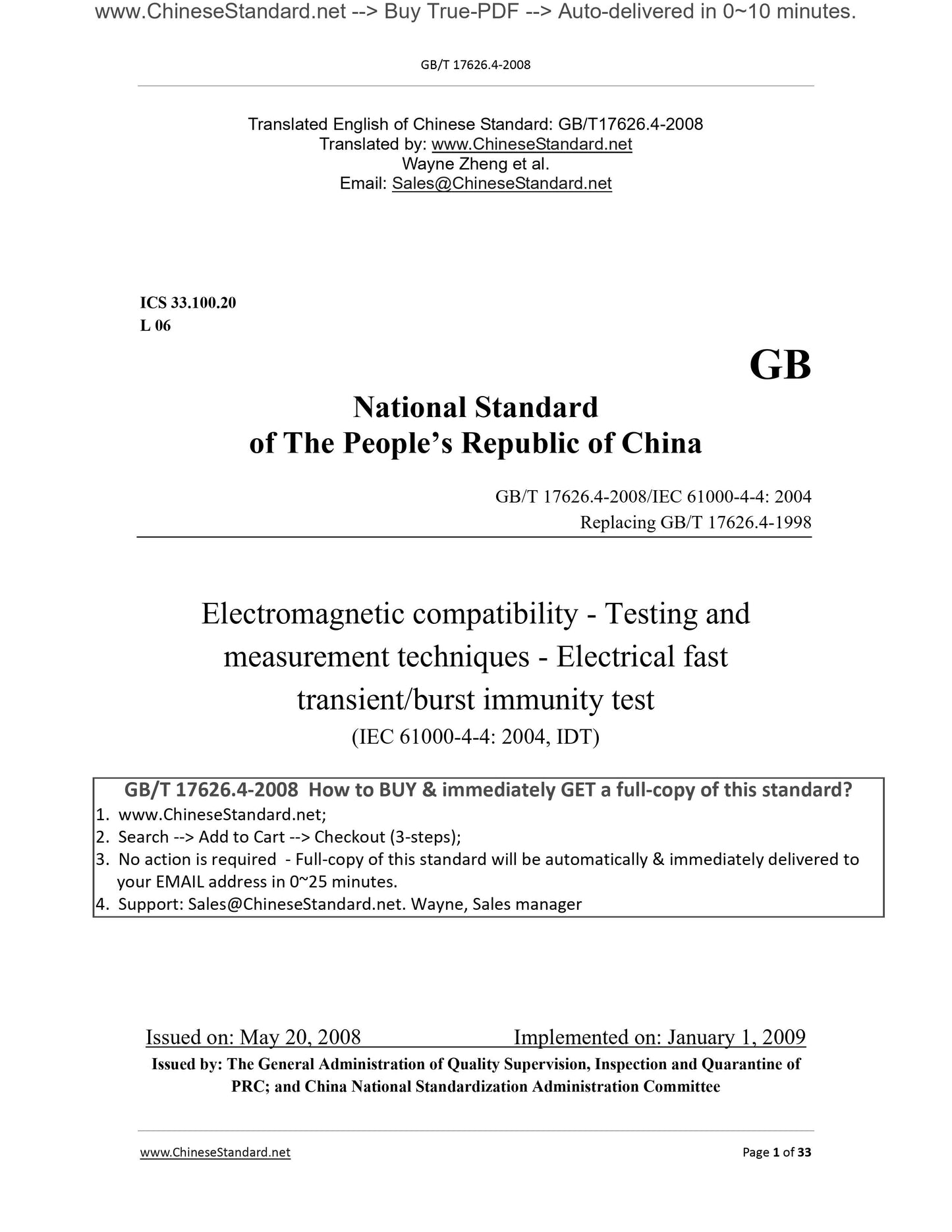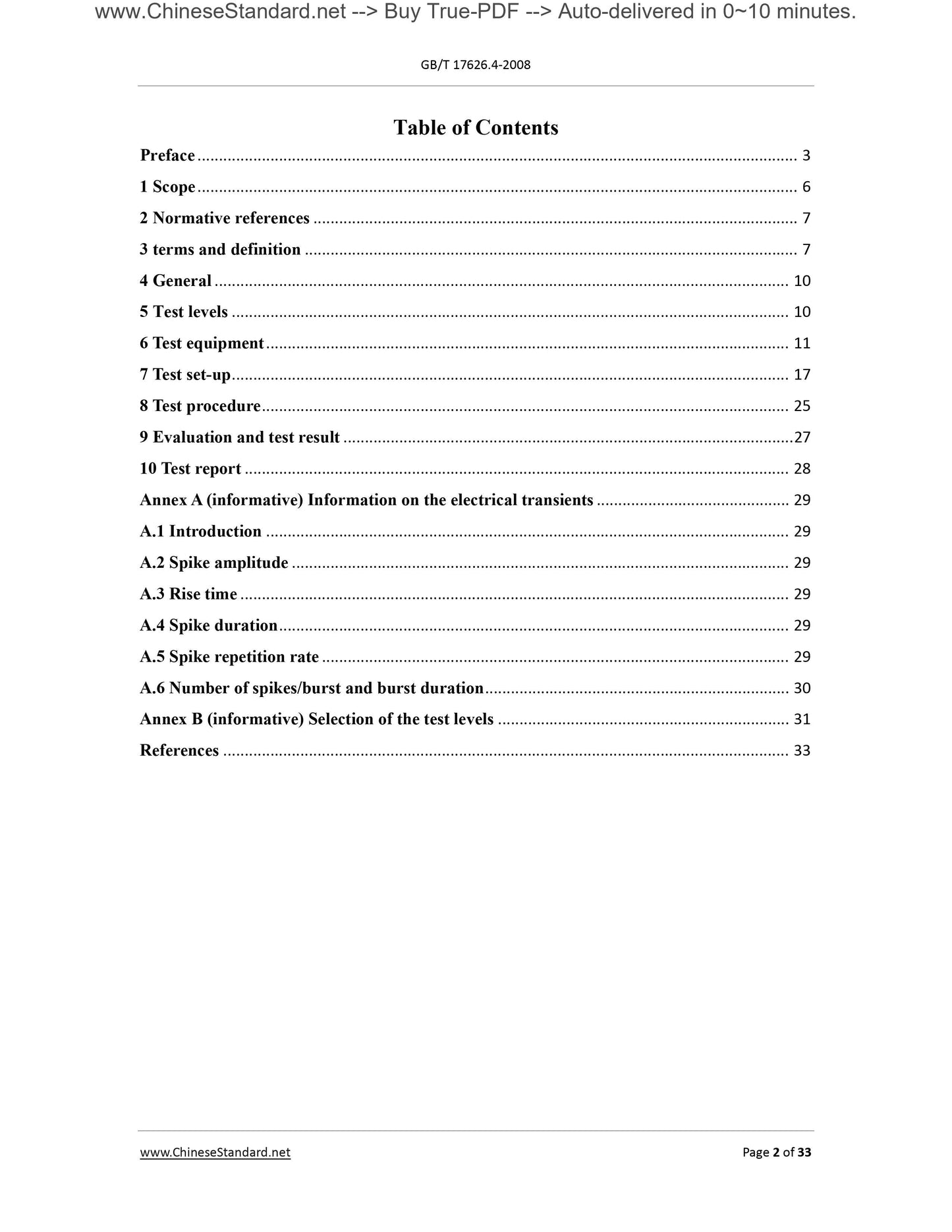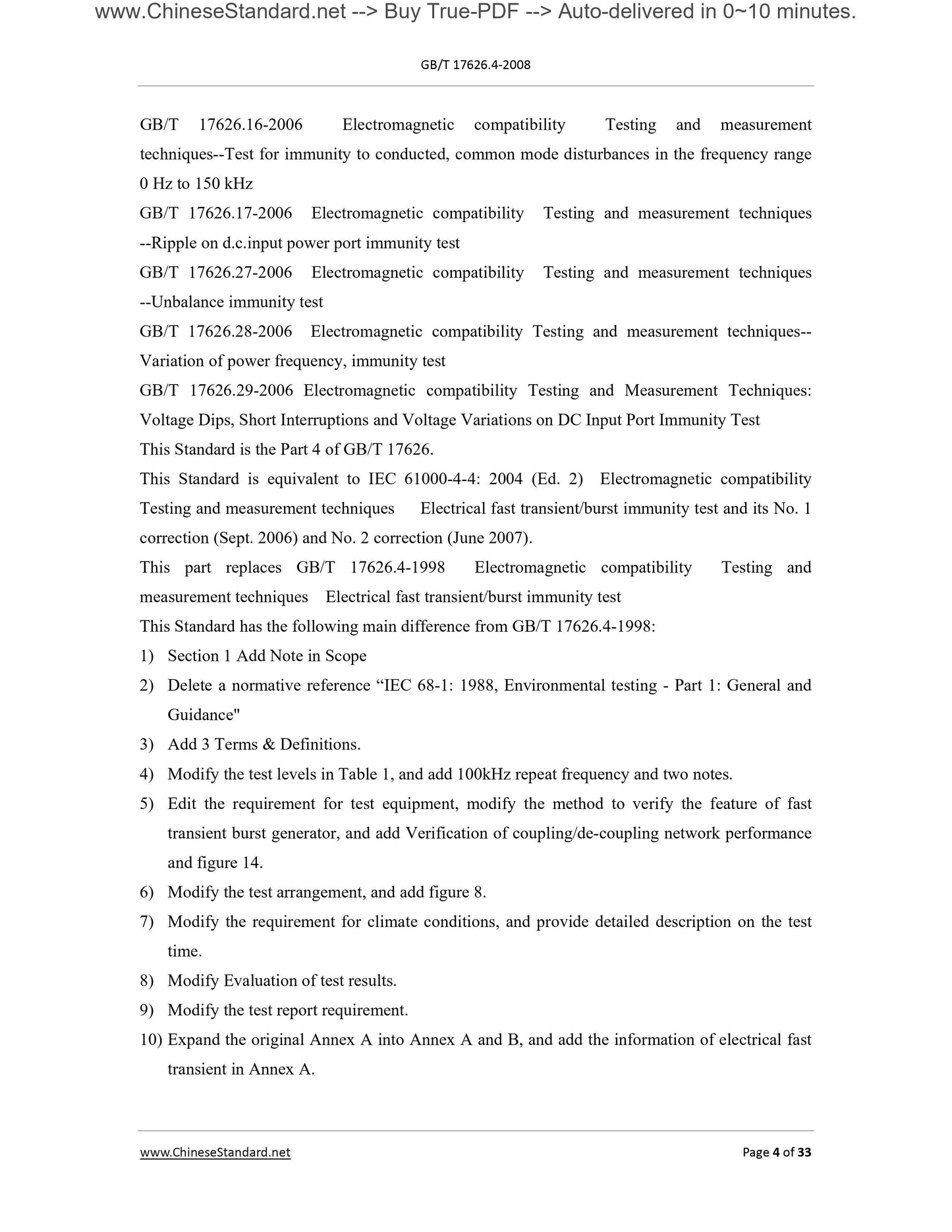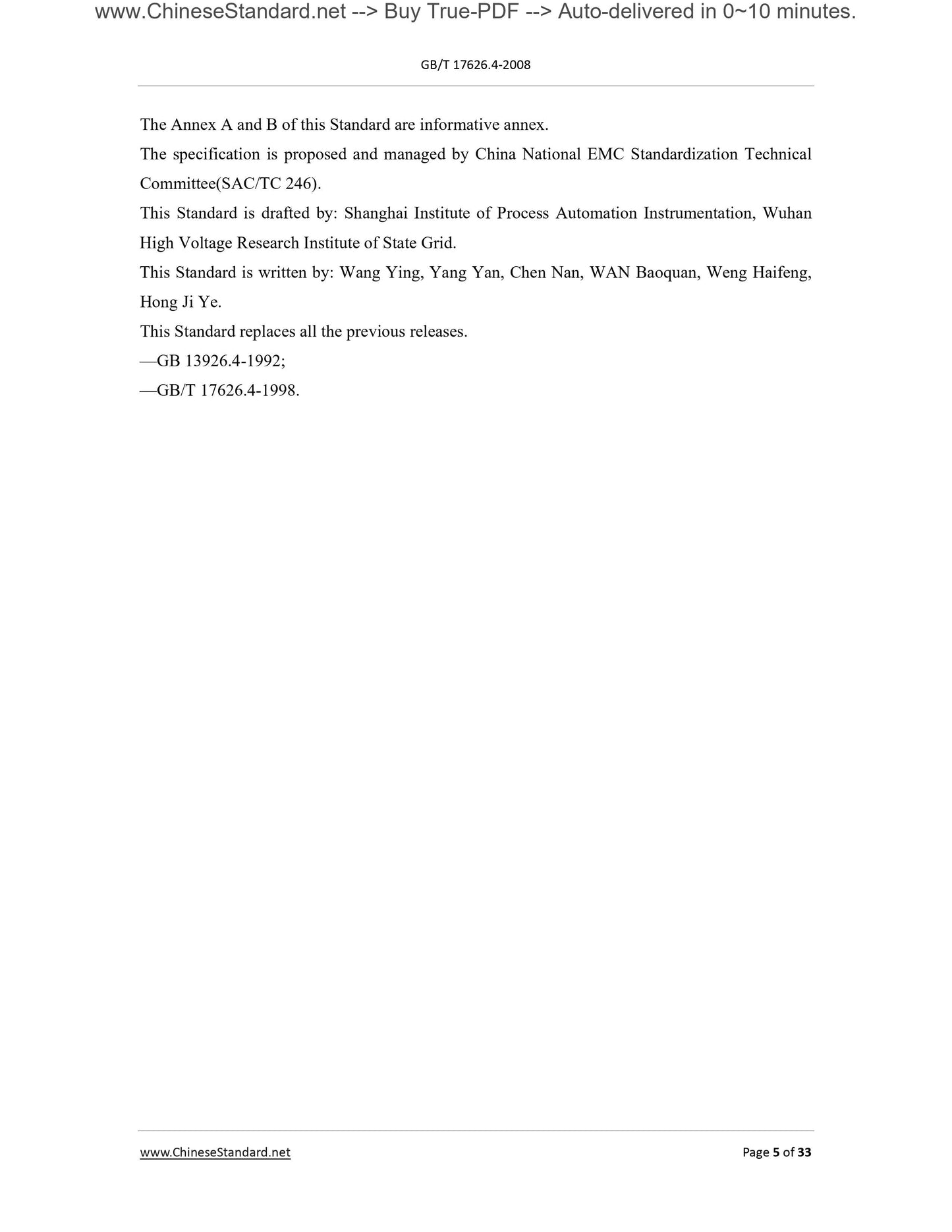1
/
of
7
PayPal, credit cards. Download editable-PDF and invoice in 1 second!
GB/T 17626.4-2008 English PDF (GB/T17626.4-2008)
GB/T 17626.4-2008 English PDF (GB/T17626.4-2008)
Regular price
$105.00
Regular price
Sale price
$105.00
Unit price
/
per
Shipping calculated at checkout.
Couldn't load pickup availability
GB/T 17626.4-2008: Electromagnetic compatibility -- Testing and measurement techniques -- Electrical fast transient/burst immunity test
Delivery: 9 seconds. Download (and Email) true-PDF + Invoice.Get Quotation: Click GB/T 17626.4-2008 (Self-service in 1-minute)
Newer / historical versions: GB/T 17626.4-2008
Preview True-PDF
Scope
This part of GB/T 17626 relates to the immunity requirements and test methods of electrical and electronic equipment for repetitive electrical fast transients. In addition,It also stipulates the range of test grades and determines the test procedures.
The purpose of this section is to evaluate the power supply ports, signal, control and ground ports of electrical and electronic equipment that are subject to rapid electrical transients.
(Pulse group) The performance during interference determines a common reproducible evaluation basis. The test methods specified in this section describe an evaluation
A consistent method for the immunity of a prepared or system to a defined phenomenon.
Note. This part is part of the basic standards of electromagnetic compatibility of the National Electromagnetic Compatibility Standardization Technical Committee. The professional standardization technical committee is responsible for determining this
Whether the standard part of the immunity test is applicable. If applicable, the professional standardization technical committee is responsible for determining the appropriate test level and performance criteria. negative
The standardization technical committee responsible for this part is willing to cooperate with the professional standardization technical committee in the evaluation of the special immunity test values of their products.
This section specifies the following items.
--- Test voltage waveform;
--- The scope of the test level;
--- Test equipment;
--- Verification procedure of test equipment;
--- Test configuration;
--- Test procedures.
This section gives technical specifications for laboratory tests and post-installation tests.
Basic Data
| Standard ID | GB/T 17626.4-2008 (GB/T17626.4-2008) |
| Description (Translated English) | Electromagnetic compatibility -- Testing and measurement techniques -- Electrical fast transient/burst immunity test |
| Sector / Industry | National Standard (Recommended) |
| Classification of Chinese Standard | L06 |
| Classification of International Standard | 33.100.20 |
| Word Count Estimation | 26,244 |
| Date of Issue | 2008-05-20 |
| Date of Implementation | 2009-01-01 |
| Older Standard (superseded by this standard) | GB/T 17626.4-1998 |
| Quoted Standard | GB/T 4365-2003; IEC 60050.300-2001 |
| Adopted Standard | IEC 61000-4-4-2004, IDT |
| Regulation (derived from) | Announcement of Newly Approved National Standards 2008 No. 8 (No. 121 overall) |
| Issuing agency(ies) | General Administration of Quality Supervision, Inspection and Quarantine of the People's Republic of China, Standardization Administration of the People's Republic of China |
| Summary | This standard specifies the electrical and electronic equipment for repetitive electrical fast transient immunity requirements and test methods. In addition, the test also provides a range of levels to determine the test procedure. The purpose of this section is to assess the electrical and electronic equipment power supply port, signal, control and earth ports by electrical fast transient interference in performance when determining a common basis for the assessment can be reproduced. The test method specified in this section describes a device or system assessment has been defined consistent approach to the phenomenon of immunity. This section provides the following: test voltage waveform, trial level ranges, test equipment, test equipment calibration procedures, test configuration, test procedures. This section gives the laboratory tests and post-installation testing specifications. |
Share













